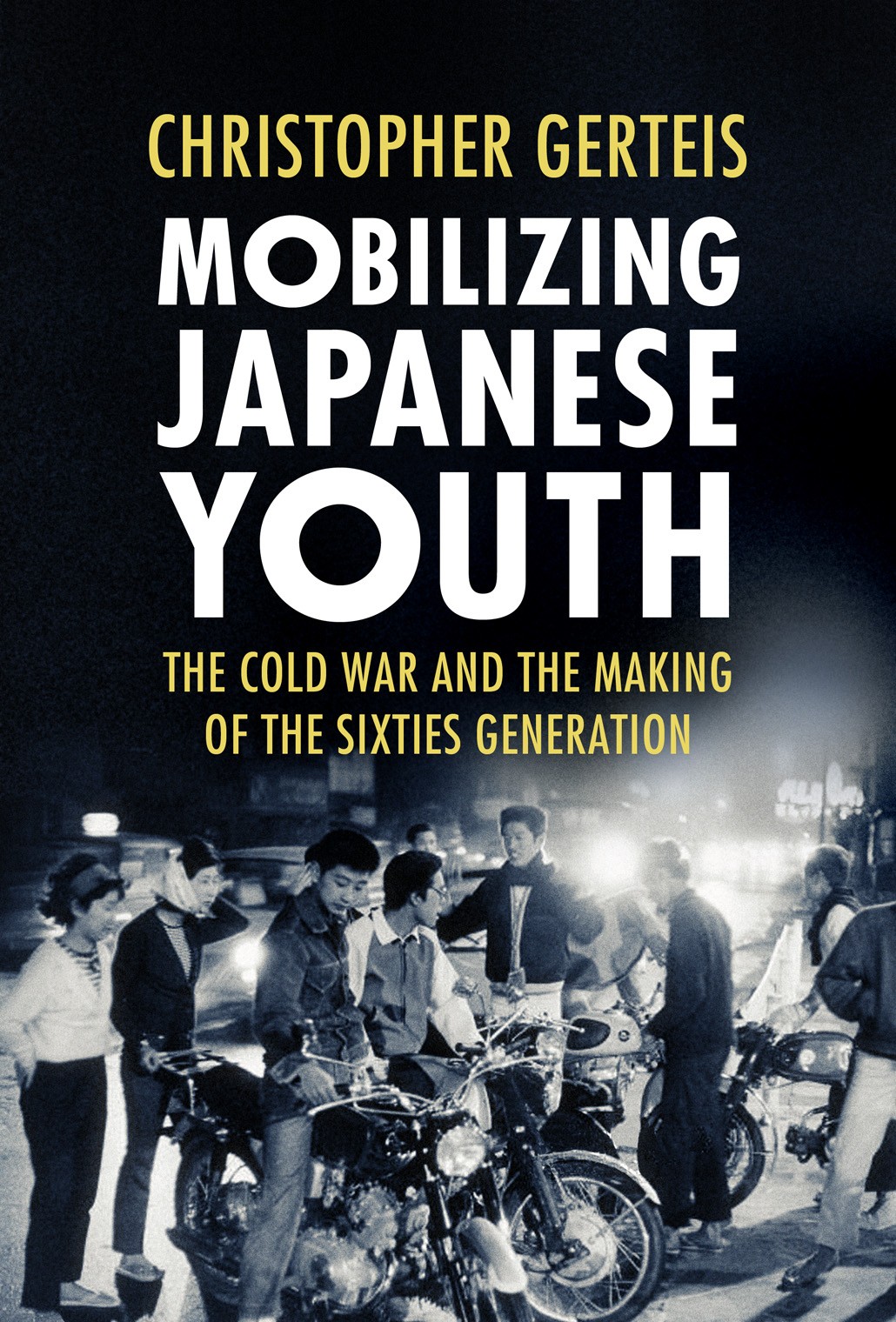WEAI Author Q&A: Christopher Gerteis's 'Mobilizing Japanese Youth'

We are excited to announce a new title in the Studies of the Weatherhead East Asian Institute book series: Mobilizing Japanese Youth: The Cold War and the Making of the Sixties Generation, published by Cornell University Press. The book's author, Christopher Gerteis, is Associate Professor of Contemporary Japanese History at SOAS University of London and Associate Professor and Academic Editor at the University of Tokyo's Institute for Advanced Studies on Asia.
In Mobilizing Japanese Youth, Christopher Gerteis examines how non-state institutions in Japan—left-wing radicals and right-wing activists—attempted to mold the political consciousness of the nation's first postwar generation, which by the late 1960s were the demographic majority of voting-age adults. Gerteis argues that socially constructed aspects of class and gender preconfigured the forms of political rhetoric and social organization that both the far-right and far-left deployed to mobilize postwar, further exacerbating the levels of social and political alienation expressed by young blue- and pink- collar working men and women well into the 1970s, illustrated by high-profile acts of political violence committed by young Japanese in this era.
As Gerteis shows, Japanese youth were profoundly influenced by a transnational flow of ideas and people that constituted a unique historical convergence of pan-Asianism, Mao-ism, black nationalism, anti-imperialism, anticommunism, neo-fascism, and ultra-nationalism. Mobilizing Japanese Youth carefully unpacks their formative experiences and the social, cultural, and political challenges to both the hegemonic culture and the authority of the Japanese state that engulfed them. The 1950s-style mass-mobilization efforts orchestrated by organized labor could not capture their political imagination in the way that more extreme ideologies could. By focusing on how far-right and far-left organizations attempted to reach-out to young radicals, especially those of working-class origins, this book offers a new understanding of successive waves of youth radicalism since 1960.

We thank Professor Gerteis for taking the time to discuss his latest book with us. Read the full interview below.
Q&A with Christopher Gerteis
- First, could you please introduce yourself and your research interests?
I am an historian of modern and contemporary Japan. I am particularly interested in the intersection of class and gender as it played out in the social movements of twentieth century Japan.
- What is special about the ‘50s and ‘60s generation in Japan? How did they differ from generations before them and who did these youths become?
The life courses of the first postwar generation, born after the end of World War II, were perhaps most shaped by their experiences of high economic growth and the social movements against the US-Japan security alliance and the Vietnam War. What is interesting about this generation, perhaps counterintuitively, is how by the late 1970s the age cohort born between the mid-1940s and mid-1950s increasingly embraced culturally and political conservative positions. In Mobilizing Japanese Youth, I establish how, despite the dominant narrative of countercultural fashions that shape popular memory, it was an underlying cultural conservatism of the Sixties Generation that shaped their political consciousness from the late 1970s well into the twenty-first century.
- How did these nonstate forces interact or clash with state actors vying for influence? Where did the nonstate actors prevail and where were they quashed?
Over the course of the 1950s and 1960s, New and Old Left tended to have the effect of pushing national politics further to the right, which inadvertently assisted the efforts of non-state actors on the Far-Right like the transwar politician, political fixer and philanthropist Sasakawa Ryūichi. Importantly, New Right youth, like Issuikai founder Suzuki Kunio, were about as ineffectual as the New Left. It was the Old Right that had the most success at influencing the electorate, politicians, and the state bureaucracy.
- Can you speak a bit about how Mobilizing Japanese Youth builds on your previous research on gender? What brought you from Gender Struggles to Mobilizing Japanese Youth?
In part, Mobilizing Japanese Youth picks up from where Gender Struggles left off. Gender Struggles ended with a close analysis of the anti-Security Treaty protests of 1960, which is about where Mobilizing Japanese Youth begins. But Mobilizing Japanese Youth differs in its focus on generation as well as class and gender as categories of analysis. My thinking on generation is of course influenced by the work of Karl Mannheim, but also builds on studies of the relationship between work and life course by Marcel van der Linden and Josef Ehmer. Their work helped me discern the significance of the different life trajectories experienced by Japan’s first generation of blue- and white-collar middle-class workers.
- Do you have a favorite source you found during your research for Mobilizing Japanese Youth that really captures that moment in time?
While it will make me sound like a nerd, my favorite source from this book were the social surveys collected by the television and radio broadcaster NHK. The NHK data, collected by trained pollsters since the early 1970s, helped me triangulate a statistical approximation of the mentalité of young people in Japan during an era of youth politics that conflated generational conflict with popular culture trends.
